#smith's longspur
Text

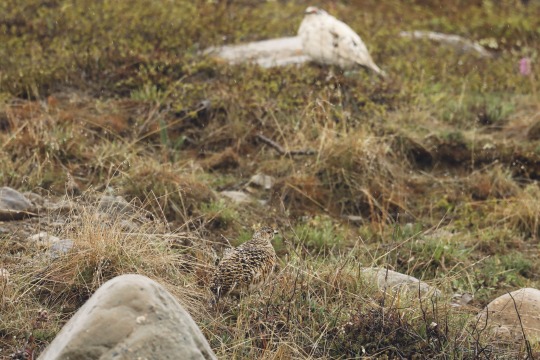


Camouflage on the arctic tundra near Deadhorse, Alaska
Taken June 2023
#eastern yellow wagtail#smith's longspur#northern pintail#rock ptarmigan#birds#my photos#tundra#arctic#alaska#north slope#dalton highway#iypdgthv
165 notes
·
View notes
Photo


bird sketch dump from a very long weekend.
#guineafowl#baltimore oriole#smith's longspur#bobolink#birds#sketches#drawing#sketchbook#sketch dump#pencil#pencil drawing#animals#bird art
344 notes
·
View notes
Photo
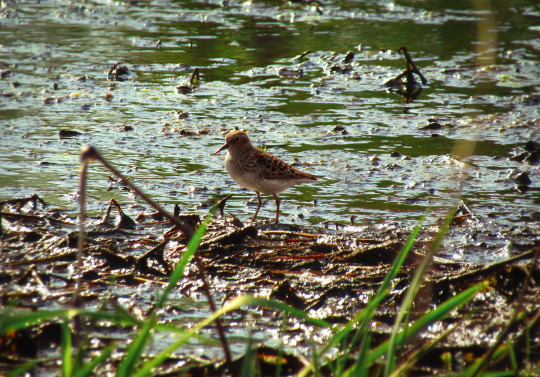
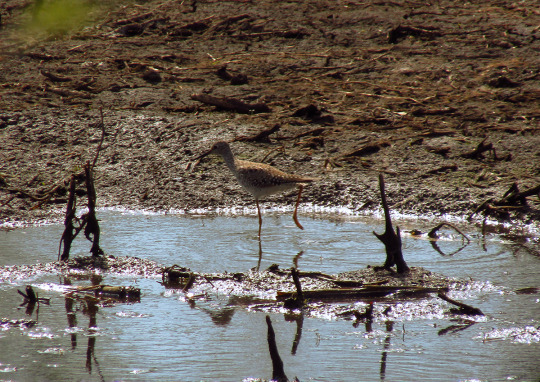
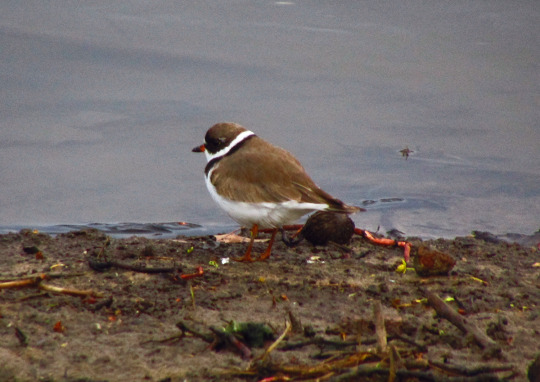
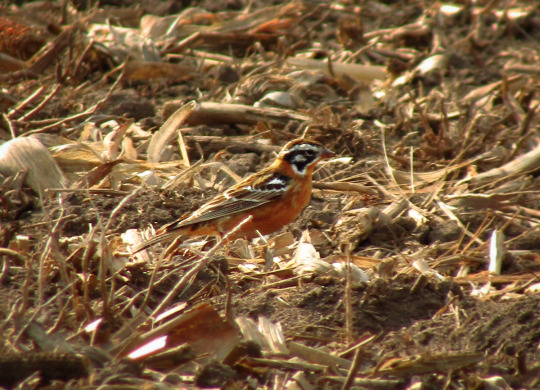

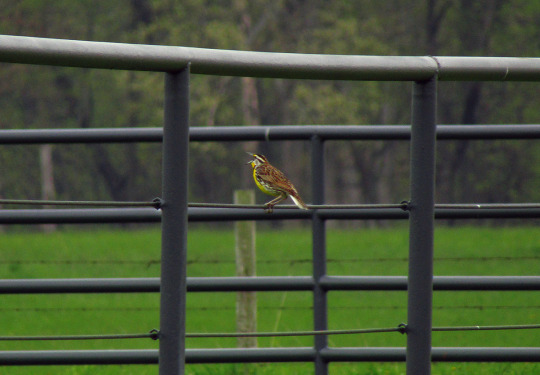


05/06/23 Spring Bird Count
Yesterday’s Spring Bird Count was the best I’ve experienced since first joining up almost 10 years ago! I had two lifers on this count (i.e., birds I’ve never seen before): Smith’s Longspur and Short-Billed Dowitcher. We had good warbler species and got some great shorebird species, which is a demographic we usually have a hard time getting in our territories.
Anyway, species pictured:
1. Least Sandpiper
2. Lesser Yellowlegs
3. Semipalmated Plover
4. Smith’s Longspur
5. Eastern Towhee
6. Eastern Meadowlark
7. Guineafowl (not included in the count)
8. Brown Earth Snake (not included in the count)
#birds#bird photography#spring bird count#spring#migration#animals#bird#snake#shorebirds#wildlife#wildlife photography#nature#bird count#least sandpiper#lesser yellowlegs#semipalmated plover#smiths longspur#eastern towhee#eastern meadowlark#guineafowl#brown earth snake#decay snake#shorebird#longspur#towhee#meadowlark#nature photography
1 note
·
View note
Text
BOTD: Lapland Longspur

Photo: Gregory "Slobirdr" Smith
"Found throughout the Arctic zones of Europe, Asia, and North America in summer, this is one of the most abundant breeding birds of the far North. Birders who visit the tundra in summer will find Lapland Longspurs very common almost everywhere there, the bright males singing their short warbling songs from hummocks or rocks or while flying. In winter the birds come south in flocks, to forage in windswept fields. Although they range widely across the continent, the vast majority winter on the Great Plains, where flocks in the thousands seem to reflect the abundance of the species on its northern nesting grounds."
- Audubon Field Guide
#birds#lapland longspur#birds of north america#north american birds#birds of the us#birds of canada#longspur#longspurs#birds of america#american birds#passerines#bird#birding#bird watching#birdblr#birblr#bird of the day#Calcarius lapponicus
43 notes
·
View notes
Text
Gliding in for the third 🐉Wings of Fire AUs names lists are...
The 🔥SkyWings🦅!
The X-Men Members:
• Charles Xavier/Professor Xavier: Charcoal
• Ororo Munroe/Storm: Maroon
• Logan Howlett/Wolverine: Longspur
• Scott Summers/Cylcops: Cinder
• Jean Grey/Marvel Girl/Phoenix: Junco
• Hank McCoy/Beast: Hawk
• Anne-Marie/Rogue: Rouge
• Remy LeBeau/Gambit: Ridge
• Kitty Pryde/Shadowcat: Kite
• Kurt Wagner/Nightcrawler: Warbler
• Jubilation Lee/Jubilee: Jebel
• Evan Daniels/Spyke: Ember
• Bobby Drake/Iceman: Bunting
• Piotr Rasputin/Colossus: Pyrite
• Illyana Rasputin/Magik: Ignite
• Rahne Sinclair/Wolfsbane: Wren
• Samuel "Sam" Guthrie/Cannonball: Gyrfalcon
• Roberto da Costa/Sunspot: Sunstone
• Danielle "Dani" Moonstar/Mirage: Merlin
• Laura Kinney/Wolverine 2.0: Lark
• Tabitha "Tabby" Smith/Boom-Boom: Burgundy
The Brotherhood:
• Erik Lehnsherr/Magnus/Magneto: Eagle
• Raven Darkholme/Mystique: Ravine
• Victor Creed/Sabretooth: Vermeil
• Pietro Maximoff/Quicksilver: Peak
• Wanda Maximoff/Scarlet Witch: Scarlet
• Mortymer Tonybee/Todd Tolansky/Toad: Topaz
• Fred "Freddy" Dukes/Blob: Finch
• Lance Alvers/Avalanche: Avalanche
• St. John Allerdyce/Pyro: Pyrope
(A few more resused names this time around, but, they fit. These are certainly on fire, aren't they? And last but never least...)
• Reader/Bby: Jasper, Hessonite, Garnet, Bluff, Steep, Sierra, Alp, Carmine, Crimson, Cerise, Besra, Shikra, Owl, Harpy, Robin, Phoebe, Chickadee, Mimid, Jay, Magpie, Tanager, Sparrow, Coal...
#honeycomb thoughts#platonic yandere marvel#yandere platonic marvel#platonic yandere marvel x reader#platonic yandere xmen#yandere x-men#platonic yandere#platonic yandere x reader#🐉Wings of Fire AU#🔥SkyWing🦅 AU
6 notes
·
View notes
Photo

Smith’s Longspur
Brooklyn SWA, WI
2 May 2020
#smith's longspur#digiscoping#original photographers#photographers on tumblr#imiging#birding#bird photography#a rarity in these parts
46 notes
·
View notes
Photo

Daily Bird: Smith’s Longspur
Range: summers, Alaska; winters, southern Great Plains
More information: here
Photo: https : // birdsna . org/Species-Account/bna/species/smilon/introduction
19 notes
·
View notes
Photo
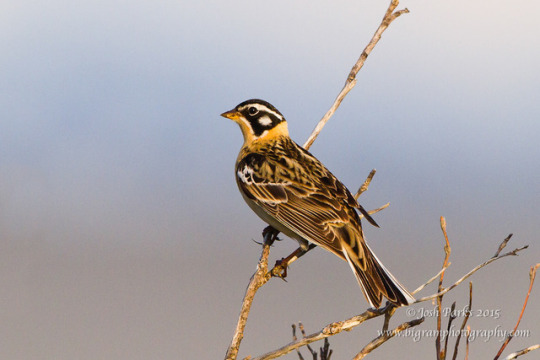
Smith’s Longspur (Calcarius pictus) - photo by Josh Parks / bigramphotography.com
88 notes
·
View notes
Text
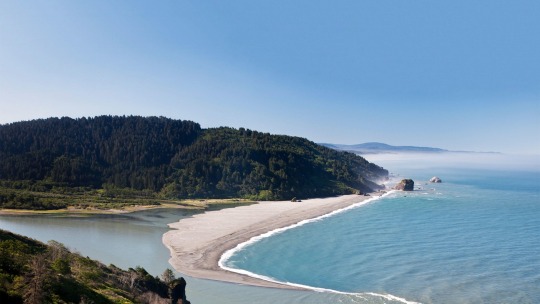
Redwood National Park! Redwood National Park is known for having some of the tallest trees in the world, but it also features oak woodlands, riverways, and coastlines that support a diverse suite of birds. As the park’s climate changes, many of the birds that we commonly see here are likely to fight suitable climate, such as the Great-Horned Owls and other owl species. But the warming climate will likely challenge other birds, including many warbler species that occur in the park, including Nashville, MacGillivray’s, Yellow-rumped, and Townsends Warblers. The park’s climate is projected to worsen for woodpecker species also, including Acorn, Red-bellied Sapsucker, Downy, and Hairy. It is recommended that managers help these and other species by emphasizing habitat restoration and reducing other stressors.
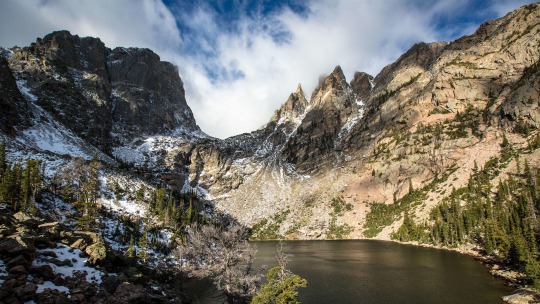
Rocky Mountain National Park! Redwood National Park is known for having some of the tallest trees in the world, but it also features oak woodlands, riverways, and coastlines that support a diverse suite of birds. As the park’s climate changes, many of the birds that we commonly see here are likely to fight suitable climate, such as the Great-Horned Owls and other owl species. But the warming climate will likely challenge other birds, including many warbler species that occur in the park, including Nashville, MacGillivray’s, Yellow-rumped, and Townsends Warblers. The park’s climate is projected to worsen for woodpecker species also, including Acorn, Red-bellied Sapsucker, Downy, and Hairy. It is recommended that managers help these and other species by emphasizing habitat restoration and reducing other stressors.

Saguaro National Park! Saguaro National Park’s two districts outside of Tucson, Arizona are characterized by water features, pine forests, and mountains to the east and protected desert vegetation to the west. Each side of the park is part of its own Important Bird Area—each a diverse ecosystem that supports the desert’s roadrunners, woodpeckers, and quails. As the climate changes, dozens of species could be extirpated from the park or face worsening conditions. These include Harris’s Hawk, Mexican Spotted Owl, and various wren species. It is recommended that park managers emphasize protecting existing habitats and reducing the effects of nonnative species.
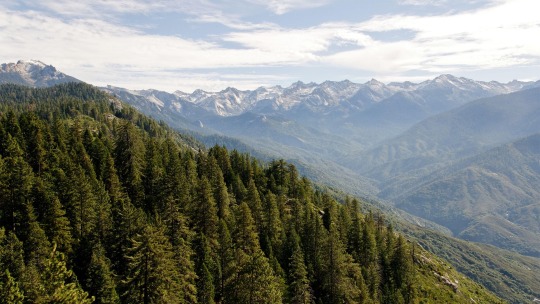
Sequoia and Kings Canyon National Parks! California's Sequoia and Kings Canyon National Parks are side by side in one of the most dramatic landscapes in the United States, home to deep forests housing the world’s largest trees. The park’s climate may worsen for Steller’s Jays and Clark’s Nutcrackers in the drier seasons to come. However, it might remain suitable for most neotropical migrants in the park, particularly warblers, such as MacGillivray's, Wilson’s, Yellow, and Common Yellowthroat. Key to maintaining bird species in these changing conditions will be preserving habitat and reducing impacts from disturbance and nonnative species

Shenandoah National Park! Forests of various types cover 95 percent of Virginia's Shenandoah National Park, and they invite a variety of birds to visit year-round—whether they breed in summer, migrate through in spring and fall, or spend the winter. As forests warm, a number of birds who breed in Shenandoah at the southern end of their range, including thrushes and warblers, might cease finding suitable climate in the park. In winter, though, the park’s climate may become suitable for 43 species, which could colonize the park. These include 11 birds, like the Common Yellowthroat and Orange-crowned Warbler, that currently breed or migrate through Shenandoah, and may choose to spend the winter, too.

Theodore Roosevelt National Park! Widely known for large mammals, such as bison, elk, and big-horned sheep, North Dakota’s Theodore Roosevelt National Park, boasts much broader biodiversity. The park can be broken down into four ecosystems—flood plains, forest, prairie/grassland, and rivers/streams—and each ecosystem hosts various birds based on the resources they provide during a particular season. Some birds call this park home year-round, such as Golden Eagles, White-breasted Nuthatches, and Great-horned Owls, which are typically found in the forested areas on the flood plain. In the spring and fall seasons, birds like White-throated Sparrows, Sandhill Cranes, and White Pelicans are found around the Little Missouri River.

Voyageurs National Park! Minnesota is one of the fastest warming states in the U.S. Its winters are becoming milder and its snowfall less consistent—and this is especially true in boreal forests like those in Voyageurs National Park. The park’s climate is likely to improve for dozens of bird species which may colonize the park from the south in summer or winter. However, Minnesota’s iconic Common Loon may find less suitable climate in the park by 2050, while other bird species could be extirpated, like Red-breasted Mergansers, Hairy Woodpeckers, Gray Jays, and a number of charismatic warblers. Park managers should track bird populations to determine priority areas for habitat management within the park.

Wind Cave National Park! America’s eighth national park, which gets its name from the sound of wind whistling through a cave opening, is located in southwestern South Dakota. The park splits into three ecosystems: ponderosa pine/aspen forests, riparian woodlands, and a mixed-grass prairie. Meadowlarks and bluebirds live on the mixed-grass prairie, while Black-backed Woodpeckers, Ovenbirds, and tanagers live in the forests.

Wrangell St. Elias National Park ad Preserve! Wrangell St. Elias, America’s largest national park, is home to four major mountain ranges, the second highest peak in the U.S., one of largest active volcanoes in North America, and massive glaciers. The park’s climate could become less suitable for 32 bird species by 2050, for instance the Say’s Phoebe and Smith’s Longspur; the latter could be extirpated in the park over the coming decades. Meanwhile, the park’s climate could become more suitable for 42 species, such as the Sharp-tailed Grouse and the Red-breasted Nuthatch. It is recommended that park managers focus on monitoring programs to identify changes in bird communities.
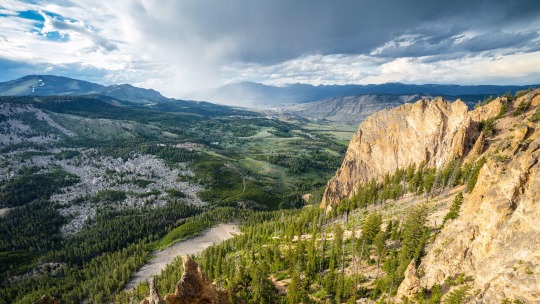
Yellowstone National Park! Yellowstone National Park is currently home to a plethora of songbird species that nest on willows growing alongside western rivers. Suitable climate is projected to persist for several of these riparian songbirds, such as the Yellow Warbler, Song Sparrow, and Willow Flycatcher, a priority species for the park. But it may grow too dry and hot for others, such as Wilson’s Warbler, Warbling Vireo, and Lincoln’s Sparrow. Because these species are willow-dependent, park managers can continue to protect natural systems—including supporting large carnivores and beavers, both of which promote healthy streamside willows beneficial to riparian songbirds.
0 notes
Photo


Our Denali/Kenai Tour in Alaska is off to an incredible start! These are just a few of the amazing images from encounters with the impressive array of wildlife we've enjoyed over the past few days. Our Moose/Grizzly count is tied at 14 for the tour so far, and we just completed the Ptarmigan sweep (Willow, Rock, and White-tailed) with an obliging, strutting, Spruce Grouse to boot. While conditions didn't allow for photo ops as jaw-dropping as last year's success, we nevertheless had spectacular views of the enigmatic Smith's Longspur, now seldom seen in Alaska. Black-backed Woodpeckers at nest holes, insanely close Three-toed Woodpecker, Bohemian Waxwing, and two lovely Northern Hawk Owls were also highlights, among others.
Photos: Northern Hawk-Owl & Spruce Grouse, by Forrest Rowland
#birds#birding#birdwatching#birdingtours#nature#wildlife#photography#birdphotography#naturephotography#wildlifephotography#alaska#denali#kenai#northern hawk owl#spruce grouse
37 notes
·
View notes
Photo





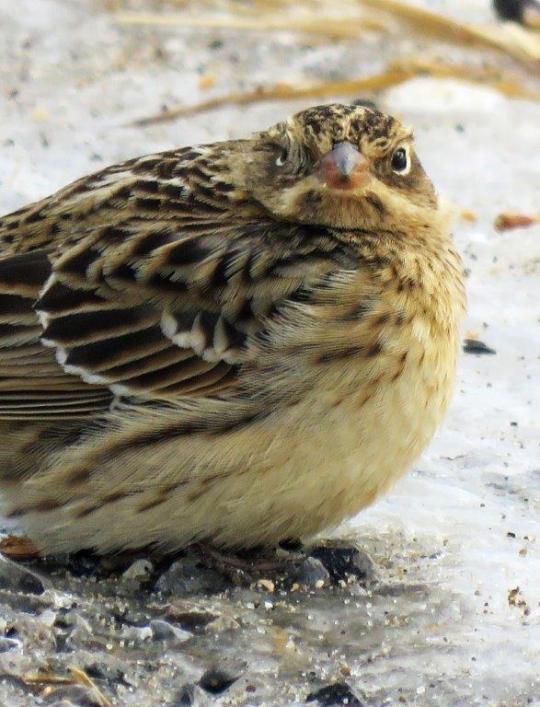
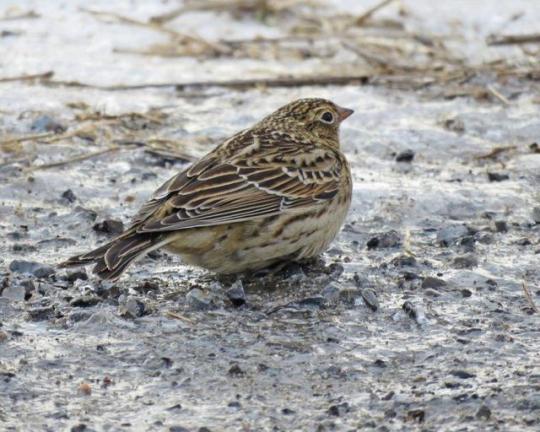
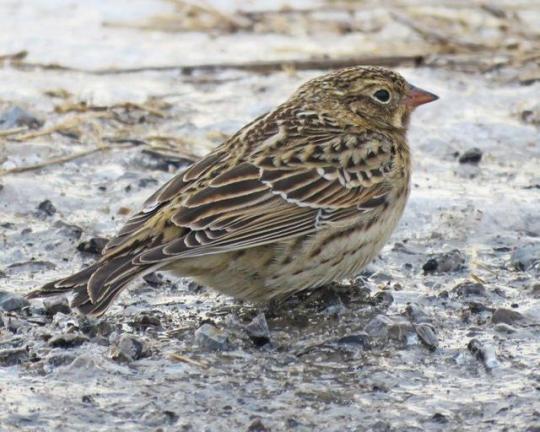


SMITH’S LONGSPUR
This bird brought a great number of birders to a concession near Long Point
for several weeks. Definitely a rarity in SW Ontario. It is characterized by
the distinct eye rings, buff belly colouring and slightly larger size. Some
locals were delivering seeds on a regular basis, which kept it in the area
but degraded the photos. This also attracted snow buntings, pipits, horned
larks, a pair of Lapland longspurs, tree sparrows and savannah sparrows.
Identifying the target in a flock of a hundred was somewhat difficult as
they constantly flew in and out.
0 notes
Photo






Smith’s Longspur
Longpoint, Ontario. Way outside of any zones it’s ever supposed to be in. Life bird!
Copyright © 2017 Julia Mustafa Photography. All Rights Reserved.
Do not repost. Do not claim as your own.
0 notes
Text
Audubon's Oriole & South Texas
Despite the cold, frigid beauty of Minnesota, Texas was calling my name. It was time to unthaw and pick up the birds I had missed during my first visit to the Lone Star State.
I left Duluth and drove down to Clear Lake, Iowa where a rare Yellow-billed loon had been reported. I arrived to be greeted by a nice winter chill and biting breeze. As I set up my scope at Clear Lake State Park, I was approached by a kind woman who invited me to bird with her group closer to the visitor's center and out of the wind. She introduced herself as Carolyn Fischer. I couldn't understand why that name seemed familiar until she informed me that she was the person who had originally found and reported the loon! I must've seen her name mentioned on the ABA rare bird alert. She had even better pictures on her phone than the ones posted on the ABA report, confirming that it was indeed a Yellow-billed Loon and not some distorted digiscoped photo of a Common Loon. We spent the day birding around the lake, but no Yellow-billed Loon was seen.
I usually don't tell other people that I'm attempting a big year, mostly because I don't want to give anyone the impression even for a second that I might be a good birder or that I know what the hell I'm doing. But I told Carolyn and I'm glad I did. As we went our separate ways, she asked me if I was warm enough, gave me a hug and told me she admired what I am doing. It's moments like these-- moments where people I hardly know go out of their way to be so kind-- that help keep me going. I camped near the lake, and despite the freezing temperatures, I felt warm the whole night.
From Iowa, I went to Nebraska as I considered the best way to navigate down south and to get a tire patched. I took this opportunity to meet a long-time friend who lives near Omaha. Robb and I had been internet friends since 2010 and although we were meeting for the first time, it felt as though we were being reunited. I took the truck in the next day and after waiting for many hours, they told me the tire looked good and sent me on my way.
I beelined it from Omaha to Mississippi, making a short pit-stop in Penn-Sylvania Prairie in Missouri for a Smith's Longspur. As I walked through the prairie, it was quiet and calm in a way I had never experienced. It was hauntingly lonely and thrillingly freeing with no one around as far as I could see. The birds jumped up through the grass, reminding me of the way the grasshoppers in the Arizona summer fling themselves from the pathways away from your feet.
Almost as soon as I crossed the state line from Arkansas to Mississippi, I was greeted by the balmy southern humidity. Back in Biloxi for the second time this year, I was able to see Mississippi's first state record of a Smooth-billed Ani!
From Biloxi, I went west to New Orleans. I was magically able to get ahold of my difficult-to-find (more difficult than a rare bird!) cousin Ashley again. While I waited for her to get out of work, I birded the Lake Pontchartrain Causeway in hopes of finding at least one of the Brown Boobies that had been reported around the lake. The Causeway is the largest bridge over water in the world, with two parallel bridges going north and south about 24 miles long. The northbound and southbound bridges have a few crossovers meant for emergency use only. These crossovers are not meant for watching birds, as I was kindly informed by a uniformed officer.
I met up with Ashley who serendipitously had an extra ticket to see the band Grizzly Bear. We had a great night (maybe too great) and the next morning I tried again for the Boobies. I noticed that the two of the crossovers now had police cars parked, either waiting to catch speeders or help those with an actual emergency, but there were two empty ones so I could turn around and change direction without having to repay the toll. I drove for what seemed like forever up and down the causeway, when I finally found one Brown Booby at mile marker 16. There was no way for me to stop, but I'm sure I managed to frustrate the drivers behind me as I drove slowly to watch the Booby fly out of sight.
I tried for Yellow Rails on my way out of Louisiana, and again at Anahuac when I arrived in Texas, but was disappointed. I found out about the Rice and Yellow Rail festival (Yellow Rail almost guaranteed!) about two days too late.
I drove through Texas the opposite direction from my very first visit, going from east to west. Driving through Houston to Aransas National Wildlife Refuge made real the photos and videos I had seen just a few months prior depicting the mark Hurricane Harvey had left on the area. The Aransas NWR visitors center was closed indefinitely due to the damage, but the refuge was still open to visitors.
The first time I visited Aransas was in April. At that time, I had been on the road for a month and I was still processing how exactly to navigate this journey on my own. I was struggling with learning how to be a better birder, with learning how to be self-sufficient, and with my anxiety. Aransas showed me Whooping Cranes for the first time in my life. These Cranes represented a story of fragile beauty, and I felt angry at my own species for letting these birds get so close to extinction. I remember trying to process all these emotions while sitting under Aransas' five hundred year old oak tree, staring at the Gulf of Mexico. I remember taking a deep breath and feeling so small by comparison to the sea, the tree, and the evolutionary history of the creatures of earth. And despite the chaos, I felt at peace.
I had to visit the tree again. As I rounded the corner, noticing the other fallen oaks, I hoped with all my might it was still standing. And although the mustang vines covering the tree had been damaged, the old oak still stood. I sat like I did in April and I took a deep breath. Staring out at the sea again, surrounded by the damage of an unthinkably powerful hurricane, I thought about the role humans play in the ecological community. I wonder if we can save ourselves the way we saved the cranes.
I met up with a fellow female solo traveler I had met in North Carolina. We got Tex Mex in her hometown of Corpus Christi and reminisced on our separate journeys. Afterwards, I set up camp on Padre Island National Seashore and fell asleep to the sound of the waves breaking about thirty feet away.
Time birding in South Texas is always well spent. To me, it's paradise. I love the bright and vibrant Green Jays, the clamoring of the Chachalacas, and the almost overwhelming biodiversity. I was finally able to see Altamira Orioles and Clay-colored Thrushes-- two fairly common Rio Grande Valley birds that somehow eluded me on my first trip. I spent just over a week in the RGV and was rewarded with Sprague's' Pipit, and White-collared Seedeater fairly easily.
The Tamaulipas Crow is a Mexican native making in a rare return to South Texas for the time being, and a few had been spotted hanging out at the Brownsville Landfill. There is a strange symbiosis between the landfill and birders-- the Brownsville Sanitary Landfill allows birders into the dump to hang out and watch birds. I'm sure the sanitation department doesn't fully understand why people want to hang out there, and I'm not sure I understand why the dump lets people hang out there. To me it seems like a lawsuit waiting to happen, but then again this is Texas and not California.
I arrived late one afternoon and hung around until sunset with no views of the crow. On the second morning, just after sunrise, I arrived to see birders up on the hill waving me down. I had just driven past the Tamaulipas Crow! I parked as safely as I could away from the garbage trucks and plow-tractors and snagged a few photos.
Although my trip to the RGV was highly successful, it was not without its frustrations. It took five separate attempts for me to see a Tropical Parula. I also spent many hours on several beautiful, clear days trying to turn hawks into Hook-billed Kites but my willpower alone could not do the trick. I tried to chase a reported Rose-breasted Becard to make up for the one I missed in AZ. I hoped for late Groove-billed Ani in Harlingen but no luck there either. And although it would've been an extremely lucky find, I still kept my eye out for Red-billed Pigeons.
The highlight of this South Texas trip was the secretive Audubon's Oriole- a bird whose northernmost range extends slightly into South Texas. On my second to last day in the valley, I traveled an hour northwest to Salineño, a spot right next to the Rio Grande known to attract the Audubon's. I spent a few hours waiting at the feeders with a birder named Mike. We watched the Green Jays and the Kiskadees mill around. An occasional Sharp-shinned Hawk would fly in to try to snag a Red-winged Blackbird and stir things up. As we watched, Mike and I talked about big year birders, about being traveling bird bums, and about listing as a hobby. Although I didn't get the Audubon's that day, it was an extremely rewarding experience.
I drove back to my airbnb in McAllen for the night and in the morning I tried again for the Audubon's, but this time a little closer. Birders I had met at the landfill told me they had seen an Audubon's Oriole hanging around the National Butterfly Center just a few miles down the road from where I was staying. I had visited there once before and decided to give it one more shot!
When I arrived, another birder told me he had seen the Audubon's Oriole the day prior, and it was hanging around with an Altamira Oriole. I hiked all around the property, looking at butterflies and although I didn't know their names I admired them all the same. I sat by the bird feeder station and watched the grackles and house sparrows duke it out over scattered seed. All of a sudden there was a flash of orange-- an Altamira Oriole! My heart started racing. Maybe the Audubon's is close by! I waited patiently and watched the Altamira fly north along the path. I quietly and slowly followed, but lost it. I stood in silence for a second then I heard an Oriole calling. It sounded more forlorn than an Altamira. I turned the corner and there it was, picking at the old fruit that was set out to attract butterflies! It stood still long enough for a photo and I was ecstatic. I watched it for a bit as it was following two Altamira Orioles around the gardens. Occasionally one of the Altamira's would try to chase it off and the Audubon would give a sad-sounding call. I know this is anthropomorphism, but I wanted to tell the Altamira to knock it off, leave the poor guy alone! But birds will be birds.
0 notes
Photo

Smith’s Longspur
Fallow field, WI, 4-28-17
#smith's longspur#digiscoping#original photographers#imiging#a rarity in these parts#swarovski#nikon 1v1#birding#bird photography
72 notes
·
View notes
Photo

Smith’s Longspur (Calcarius pictus) - photo by Tom Reed
84 notes
·
View notes
Video
youtube
UAF researcher continues her study of Smith's Longspur in Alaska.
0 notes